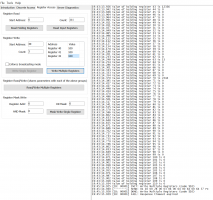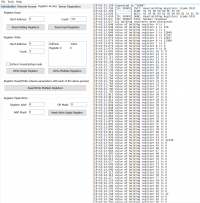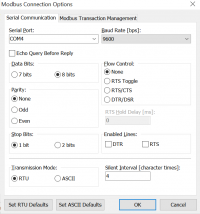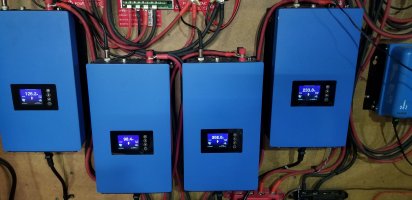While I agree with you that switching the inverters AC on and off on a daily basis may not be the best form of power management it technically should not bother the inverter. The anti islanding circuitry is well equipped to handle that.
I myself run 4 GTIL2 with 2 paralleled on L1 and 2 paralleled on L2.
L1 GTIL"s share 1 paralleled CT and so do the other 2 GTIL's on L2
In my scenario if the batteries fall below a certain voltage (49V) the 4 GTIL will slowly throttle down to no production and will idle between 3W to 7W each Once Solar starts charging again and the reboot voltage(51V) is reached the 4GTIL will slowly ramp up and start producing again.
In my case no need to shut down AC or DC..
View attachment 25517
Not quite sure why you have that much draw at idle I certainly do not experience that. I have to go all the way back to March to find a evening sleep phase or my GTI's and they were pulling between 0.1A and 0.2A so 24W to 48W.
Wolf
View attachment 25518









